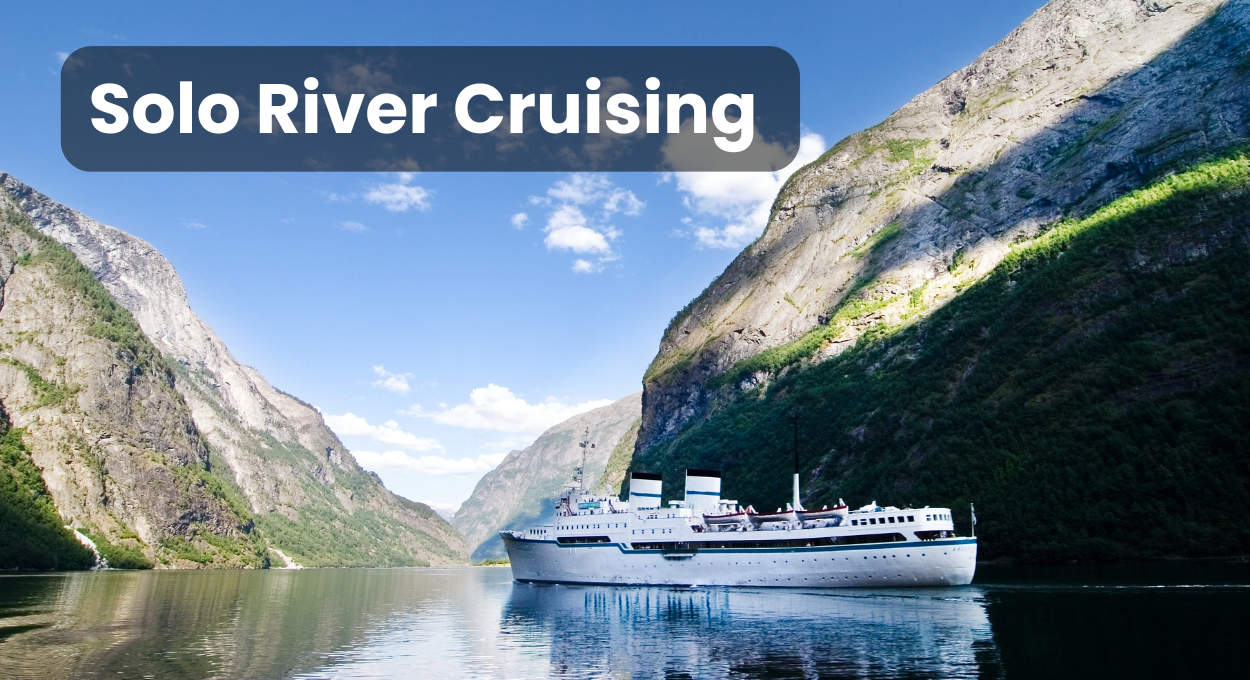Ever wondered what makes the Philippines so unique? From having over 7,000 islands to boasting the world’s longest navigable underground river, the Philippines is packed with fascinating surprises. Discover 20 “cool facts about Philippines” that will amaze you.
Key Takeaways
The Philippines is home to the world’s longest navigable underground river at the Puerto Princesa Subterranean River National Park, which stretches 8.2 kilometers.
Basketball is more than just a sport in the Philippines; it’s a national obsession, highlighted by the establishment of Asia’s first pro basketball league in 1975.
The Philippines is known for its rich linguistic diversity, with over 170 languages and dialects, and is one of Asia’s largest English-speaking countries.
Introduction

Nestled in the heart of Southeast Asia, the Philippines is an archipelago bathed in the sun and rich in heritage. With 7,641 islands, many of which remain unnamed on international maps, this country is a treasure trove of cultural and natural wonders. In this article, we will explore some interesting facts about the Philippines. Did you know that the world’s largest pearl was discovered here, weighing a whopping 75 pounds and valued at a cool $100 million?
And when it comes to food, Filipinos enjoy a vast array of dishes, from the staple rice to exotic crocodile meat. This is a place where the extraordinary is ordinary, and every island has a delicious secret waiting for you.
The World’s Longest Navigable Underground River Philippines
Ever been on a river journey that takes you directly beneath your feet? The Puerto Princesa Subterranean River National Park is a UNESCO World Heritage Site where you can do just that. This park is home to the world’s longest navigable underground river Philippines, stretching an impressive 8.2 kilometers. The underground river, which flows directly into the South China Sea, can be navigated up to 4.5 kilometers inland, offering an extraordinary journey through deep caverns and striking rock formations.
The park, which spans approximately 22,202 hectares, is a testament to nature’s grandeur, with chambers as wide as 120 meters and as high as 60 meters.
Language Diversity of Cool Facts About Philippines
Are you aware that the Philippines is a polyglot’s heaven? With over 170 dialects and languages, the linguistic diversity in the Philippines is a reflection of its complex cultural tapestry. Some of the widely spoken languages in the Philippines include:
Tagalog
Cebuano
Ilocano
Hiligaynon
Bicolano
Waray
Kapampangan
Pangasinense
Maranao
The country’s language landscape is as varied as its three main island groups.
Officially, Filipino and English are the languages of the land, making the Philippines one of the largest English-speaking nations in Asia. Whether it’s the Central Bikol language of the northeastern region or the Kapampangan spoken in Pampanga, you’ll find a wealth of linguistic treasures here.

Shopping Extravaganza: Largest Shopping Malls
Picture a shopping affair so extensive, it could require days to navigate through all the stores! Three of the world’s biggest shopping centers – SM Megamall, SM North Edsa, and SM Mall of Asia are located in the Philippines. These malls are popular destinations for both locals and tourists. With its grand redevelopment, SM Megamall surpassed SM North Edsa as the largest mall in the country. But it’s not just about size – the iconic globe at SM Mall of Asia is a sight to behold, especially when it lights up the night sky.
These mega malls are not just places to shop; they’re a shopper’s dream come true, showcasing the Philippines as one of the largest island countries with a penchant for grand shopping experiences, including some of the world’s largest shopping malls.
Volcanoes Galore

Ever set foot on an island teeming with more volcanoes than towns? Camiguin Island boasts seven volcanoes and only five towns, making it an explosive destination for the adventurous at heart. Don’t miss Mount Hibok-Hibok, an active volcano that last erupted in 1953, or the natural hot springs that are a product of the island’s intense geothermal activity.
The island’s unique volcanic landscape, part of the main island groups, has molded its topography into a place of awe-inspiring natural beauty, inviting visitors to explore its bubbling hot springs and pristine white sand beaches.
Basketball Craze
In the Philippines, Basketball transcends being just a game; it’s a national fixation. The country established Asia’s first professional basketball league, the Philippines Basketball Association (PBA), back in 1975, making it the second oldest in the world. The PBA’s unique blend of NBA and FIBA rules has given rise to thrilling games and legendary teams like the San Miguel Beermen, who hold the record for the most championships.
Walk down any street, and you’ll find makeshift hoops where the spirit of the game thrives, showcasing the deeply ingrained love Filipinos have for basketball.
Jeepneys: Iconic Public Transport
Take a ride on a jeepney to witness the Philippines in its most vibrant manifestation. These vibrant public transports, originating from surplus military jeeps left by American troops, are now a symbol of Filipino creativity. With chrome ornaments and bright paintings, each jeepney is a rolling work of art, proudly displaying designs that often reflect the Philippine flag or local folklore.
Approximately 9 million commuters in Metro Manila rely on these iconic vehicles daily, making them an essential part of the country’s public transport system.
The Mighty Philippine Eagle

The Philippine Eagle, or the monkey-eating eagle, presents a sight to behold as it soars high above the nation’s forests. This majestic bird is found only in the Philippines and is one of the rarest eagles in the world. With a diet that includes monkeys and flying squirrels, the eagle is a top predator, employing clever hunting tactics to catch its prey.
Unfortunately, the Philippine Eagle, also known as the national bird, is critically endangered, with conservation efforts underway to protect this national treasure and its habitat.
Pristine White Beaches

The Philippines is a paradise for beach enthusiasts, showcasing some of the most enchanting beaches globally. From the bustling shores of Boracay to the secluded coves of El Nido, the country offers a beach for every type of traveler. Some notable beaches include:
Boracay: Known for its vibrant nightlife and powdery white sand
El Nido: Famous for its limestone cliffs and crystal-clear waters
Siargao: A surfer’s paradise with powerful waves
Panglao Island: Tranquil beaches perfect for those seeking peace and quiet
Whether you’re into water sports, snorkeling, or simply soaking up the sun, the Philippines’ pristine white beaches along the Pacific Ocean are sure to enchant you.
Cultural Melting Pot
The Philippines distinguishes itself in Southeast Asia as a cultural amalgamation, with a history steeped in Western and Eastern influences. As the only Asian nation that is predominantly Christian, the country’s religious fervor is visible in its many churches and vibrant festivals. The impact of Spanish, American, and even Japanese traditions can be felt in everything from cuisine to dance, making the Philippines a fascinating blend of cultures.
Traditional folk dances like the Tinikling and Singkil, performed during special occasions, are just a glimpse into the country’s diverse cultural heritage.
Unique Wildlife
The Philippines serves as a sanctuary for wildlife aficionados, housing a staggering variety of animal species, many exclusive to this land. Birdwatchers can revel in sighting over 500 bird species, including the critically endangered Philippine Eagle and the colorful Rufous Hornbill.
The tiny Philippine Tarsier, one of the smallest primates in the world, is another unique species that calls the Philippines home. Efforts to conserve species like the Philippine freshwater crocodile, once considered the world’s most threatened crocodile species, highlight the need for continued protection of the country’s unique fauna.
Rich Flora
The Philippines’ lush rainforests are a paradise for plant lovers, with an incredible variety of flora, including about 13,500 plant species. The rainforests are not only home to common plants but also rare and unique orchids like the Rafflesia and the Waling-Waling, which are endemic to the country.
The diversity of plant life extends from the forest floor to the canopy, where you’ll find towering dipterocarp trees, delicate ferns, mosses, and a plethora of orchids.
Economic Landscape
The economic terrain of the Philippines mirrors the diversity of its natural surroundings, transitioning from conventional agriculture to services and manufacturing sectors. Agriculture still plays a significant role, employing a large portion of the Filipino workforce and contributing to the country’s GDP. The Philippines also stands out as a major player in the global market as the third largest producer and the largest exporter of coconut products.
With a robust electronics sector and a booming automotive industry, the country’s economy continues to evolve and adapt to global trends.
Historical Landmarks

Beyond being a realm of natural allure, the Philippines is also a place deeply rooted in history. Fort Santiago, a citadel built by the Spanish in Manila, the capital city, is a tangible reminder of the country’s colonial past. The iconic Mayon Volcano, with its almost perfect cone shape, has witnessed the ebb and flow of history, including its most destructive eruption in 1814.
These landmarks serve as chronicles of the Philippines’ rich history, inviting visitors to delve into the stories and events that have shaped the nation.
Popular Sports and Icons
Sports are deeply woven into the cultural tapestry of the Philippines, with icons such as Manny Pacquiao amplifying the nation’s stature on the international platform. Some of the popular sports in the Philippines include:
Arnis, the national sport, is a martial art steeped in heritage and recognized for its historical significance.
Volleyball, which enjoys widespread popularity, with collegiate tournaments and international championships drawing in fans from all over the country.
Football, which is also gaining popularity, with a growing number of fans and players.
These sports play a significant role in the lives of Filipinos and contribute to the rich sporting heritage of the country.
The Philippines has even made a mark in winter sports, with figure skating gaining recognition following the nation’s participation in the Winter Olympics.
Christmas Begins Early
In the Philippines, Christmas is not merely a day but an extended festive season that kickstarts as early as September. The festive spirit starts to fill the air, with decorations appearing in homes and public spaces, signaling the start of the world’s longest Christmas season. This extended celebration is a time for family, friends, and community, deeply ingrained in Filipino culture and cherished by all.
As the colder weather sets in, the anticipation for Christmas grows, making it a magical time of year that Filipinos look forward to with joy and excitement.
Karaoke Culture
Karaoke in the Philippines transcends being a mere pastime; it’s a cultural sensation. Since its introduction in the 1970s, karaoke has become an integral part of Filipino celebrations, with machines found in homes, bars, and even on the streets. Advancements in technology have made karaoke even more accessible, with digital systems and mobile apps allowing Filipinos to sing their hearts out anywhere and at any time.
Karaoke is a testament to the Filipino love for music and camaraderie, and it continues to be a staple at gatherings, big and small.
Text Capital of the World
The Philippines claims the title of the ‘texting capital of the world,’ with Filipinos dispatching a staggering 400 million text messages daily. With over 110 million mobile subscriptions in the country, text messaging remains the preferred method of communication for many, even in the face of rising popularity of chat apps.
The sheer volume of texts sent in the Philippines, the only country to surpass the combined daily messaging of the United States and Europe, is a testament to the country’s love for staying connected.
Educational System
Education holds paramount importance in the Philippines, with a comprehensive system that guarantees learning from kindergarten through grade 12. The public school system accommodates millions of students, supported by national government funding that provides free education at primary and secondary levels.
Some key features of the education system in the Philippines include:
Learning from kindergarten through grade 12
Public school system that accommodates millions of students
National government funding for free education at primary and secondary levels
High literacy rates, with males and females almost equally likely to be literate
The government manages education through three agencies, each focusing on different aspects of the educational journey, from basic to technical and vocational education.
Natural Disasters and Resilience
Residing in the Philippines necessitates resilience against natural calamities. With a significant percentage of the population exposed to risks like typhoons and earthquakes, Filipinos have become well-versed in bouncing back from adversity. The financial toll of these disasters is considerable, with billions in asset losses annually.
However, disaster risk insurance has become an important tool for mitigating the impact of these catastrophes, ensuring that communities can recover and rebuild more quickly.
Summary of Cool Facts About Philippines
The Philippines is an enchanting archipelago that dazzles with its natural splendor, cultural richness, and dynamic spirit. From the depths of its underground rivers to the heights of its volcanic peaks, the country offers a kaleidoscope of experiences. Filipinos are known for their warmth, resilience, and infectious love of life, making the Philippines not just a destination but a feeling that stays with you long after you’ve left its shores.
Frequently Asked Questions
What is the national bird of the Philippines?
The national bird of the Philippines is the Philippine Eagle, also known as the monkey-eating eagle. It’s one of the rarest and most powerful birds in the world and can only be found in certain parts of the country.
How many languages are spoken in the Philippines?
There are over 170 dialects spoken in the Philippines, making it incredibly linguistically diverse. In total, there are between 120 and 187 languages spoken in the country.
Can you tell me about a unique animal found only in the Philippines?
Sure, one unique animal found only in the Philippines is the Philippine Tarsier. It’s one of the smallest primates in the world and with only about 700 individuals left, it’s a treasured species.
What is the longest Christmas season in the world?
The Philippines has the longest Christmas season in the world, starting as early as September and extending through December. It’s a time of joyous celebration, family gatherings, and festive decorations.
How does the Philippines handle natural disasters?
The Philippines faces challenges from natural disasters due to its location, but Filipinos are resilient, and they use disaster risk insurance, including parametric insurance, to recover and rebuild after such events.








1 thought on “Top 20 Cool Facts About Philippines”